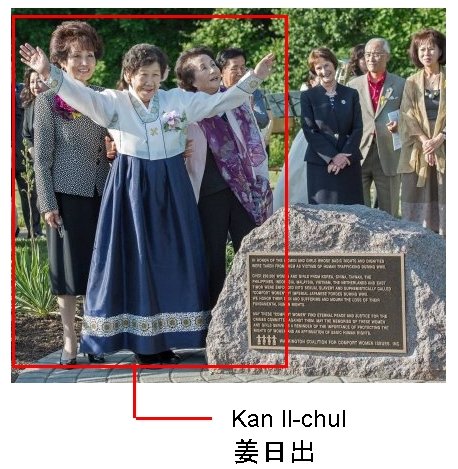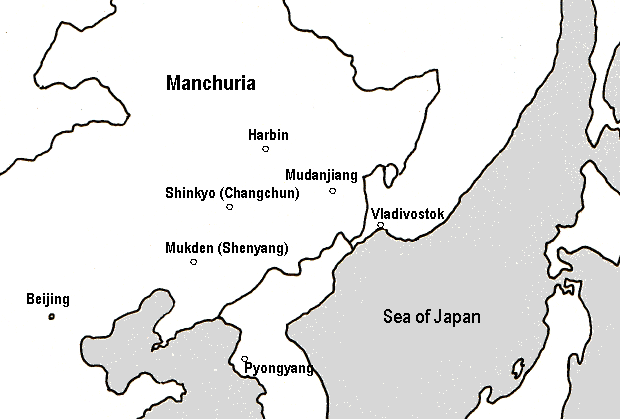
Fairfax,Virginia

Fairfax,Virginia
1. Her Testimonies
In the Japanese literature, her testimonies are identified in the following two books. As original texts are all written in Japanese, I put translation of the book titles just for convenience.
Hereinafter, her testimony contained in the Book No. 1 is referred to as gTestimony No.1h and her testimony contained in the Book No.2 is referred to as gTestimony No.2.h
Book No.1 Nanum Sharing Househ Publisher Kashiwa Shobo K.K. Publication 2002 Remarks The applicable part of the original text is available by clicking here.
Book No.2 Memory for the Future II Publisher Akashi Shoten Co., Ltd. Publication 2010 Remarks The applicable part of the original text is available by clicking here. While Testimony No.1 is a summary report of her testimony (meaning that someone else has created this concise summary based on her statement), Testimony No.2 seems to be a transcript which is a written record of exactly what she actually said. However, since the Testimony No. 2 is rather incoherent in many parts and the author cannot make head or tale of exactly what she is saying, the author considers translation of the whole text is meaningless and will quote and translate the original text to the extent necessary for the following analysis.
2. Analysis
3. The Authorfs Opinion and Remarks
- 2.1 [The circumstance under which she went out of her home]
Testimony No.1 says:
- When she was 19-years old, gpolice officers with swords came to harmonifs (grandmafs) home. At that time only harmoni and her cousin were in their house, they were unable to resist. She was taken away from her home. Besides, they deceived her as she was told to work at a factory that produces shoe strings of military boots.h
- gAlong with many Korean, Japanese, and Chinese girls riding on trucks, cars and trains, she was taken away to Mukden (now Shenyang), then to Shinkyo (now Changchun), and finally to Mudanjiang.h
- gThe comfort station at Mudanjiang looked like an army barrack made of bricks. There, with more than 30 girls, she was compelled to work as a comfort woman.h

Testimony No. 1 leaves the room to recognize that she was taken away under the government authority, being deceived to work at a factory. However, according to the Testimony No. 2, the situation is as follows.
- Before the police officers came to her house, Kan Il-chul was gin the house of her motherfs friend.h A family member of her motherfs friend communicated with her mother, then Kan Il-chul was told to gcome back home.h When she returned to her home, gone Japanese man and one Korean man were there.h
- In her home, there were only Kan Il-chul and her cousin.
- gWhen they took away her, they had thrown one letter into her home.h (According to the notes of her testimony, it means gthe policeman and the soldier threw a letter that contains her name into her home at the time of her being taken away.h)
- Before she was taken away, the township governor said to Kan Il-chul that gshe would work at a weaving factory.h
From the two testimonies, the author considered there might be another story behind the scene.
- When Kan Il-chul returned to her home, why there were only she and her cousin in her home? Where was her mother? Her mother said Kan Il-chul should come back home. This means Kan Il-chul was deliberately made to be there alone with her cousin.
- The Japanese man and the Korean man were actually underlings of a procurer. Since there were only male and female kids in her home, they could easily identify who is Kan Il-chul.
- The letter they threw away into her home was a receipt.
- Unless there was a certain ploy between her mother and her motherfs friend, there could be no such situation of leaving kids alone in home (especially at the time when mass abduction by Japanese Army/Government officers was underway as so claimed by Koreans today).
It is awkward that there are no supporting evidences of her story of abduction, such as report of abduction filed by her mother to nearby police station (police officer came to her home!). Kan Il-chul mentions about a police officer with a sword, a soldier wearing yellow clothes, and on. But from the eyes of a child, all men wearing a uniform may appear to be a soldier or a police officer. (During a war, Japanese and Korean men wore khaki-colored national uniforms, as a clear distinction from police officers who wore black-colored uniforms.)
- 2.2 [Episode of severely beaten in the comfort station]
Testimony No. 1 gives an episode of gforced to have sex with a middle-aged officer and severely beaten in the head by himh and gshe suffered so much for a long time. the injury still remains in the head.h
However, Kan Il-chul does not give a clear account on this episode in the Testimony No.2. Actually, the written testimony is so incoherent that the author cannot follow her story. In one place, the officer who had beaten her was ga man of a little bit higher rankh and in another place he was ga three-star officer.h
This means her memory is vague on this episode.
- 2.3 [Episode of burning patients with typhoid fever to death]
Testimony No. 1 gives an episode of the Japanese Army burning the typhoid-infected patients alive. It took place in the spring of 1945. The account is as follows.
gIn the spring next year harmoni Kan Il-chul came to the comfort station, harmoni was infected with typhoid fever. She suffered from a continued high fever.h gProbably out of fear of spreading the disease, the Japanese Army tried to burn the harmoni to death. When the army men took the harmoni to the foot of a mountain, firewood was piled up and they were burning fire.h
Testimony No. 2 touches upon this episode as follows.
gAbout eight of them I thinkc some persons were lying on the truck bed. Yes, they are burning peoplecBurn you know! Burn people on firec. They dig a hole on the ground, put firewood in the pit, then petrolc.It burns fiercely andcThey throw patients into the firec. I was about to be thrown into the fire pit, but I was last of the line and still on the ground.h
This description is very, very, VERY AWKWARD and IMPOSSIBLE. Typhoid fever is orally transmitted infection in the first place. Spread of the disease is preventable by quarantine and good administration of food, washing hands, etc., and not by killing patients. Then how is it possible for any army to burn living humans alive without affixing them to immovable materials? Are you saying that those people did not resist and try to climb up the hole to escape? This scene may be cremation of dead people or one scene of anti-Japan war drama depicting gcruelty" of the Japanese soldiers.
- 2.4 [Episode of being saved by Kim Il Sunfs brigade]
Testimony No.1 describes the episode of a battle between the Japanese Army and the Koreans. It goes like this: gKoreans fought fiercely with the Japanese soldiers, and escaped from the place with harmoni on their backs.h
Testimony No.2 says: gOne of the Koreans with us communicated with Kim Il Sun and he sent us a force to fight the Japanese Army. They took us to a mountain cave with me on their backs.h
This is simply impossible. In the spring 1945, Kim Il Sun was in Vladivostok, more than 200km away from Mudanjiang, leading a small group of guerrilla fighters under the command of the Soviet Army. Chased by the Japanese Army, his guerrilla force took refuge there. Obviously, her memory is contaminated with some scenes from anti-Japan war dramas.
Testimony No.2 is contained in a book published in 2010. The author believes that by this time she is demented. Incapacity to recognize the difference between what is real and what is not real is a clear sign of dementia. The author also questions the moral soundness of Korean civil activists as to the use (e.g. public exposure) of such a senile person for their own ends.
 To Top To Top |
 To Home To Home |